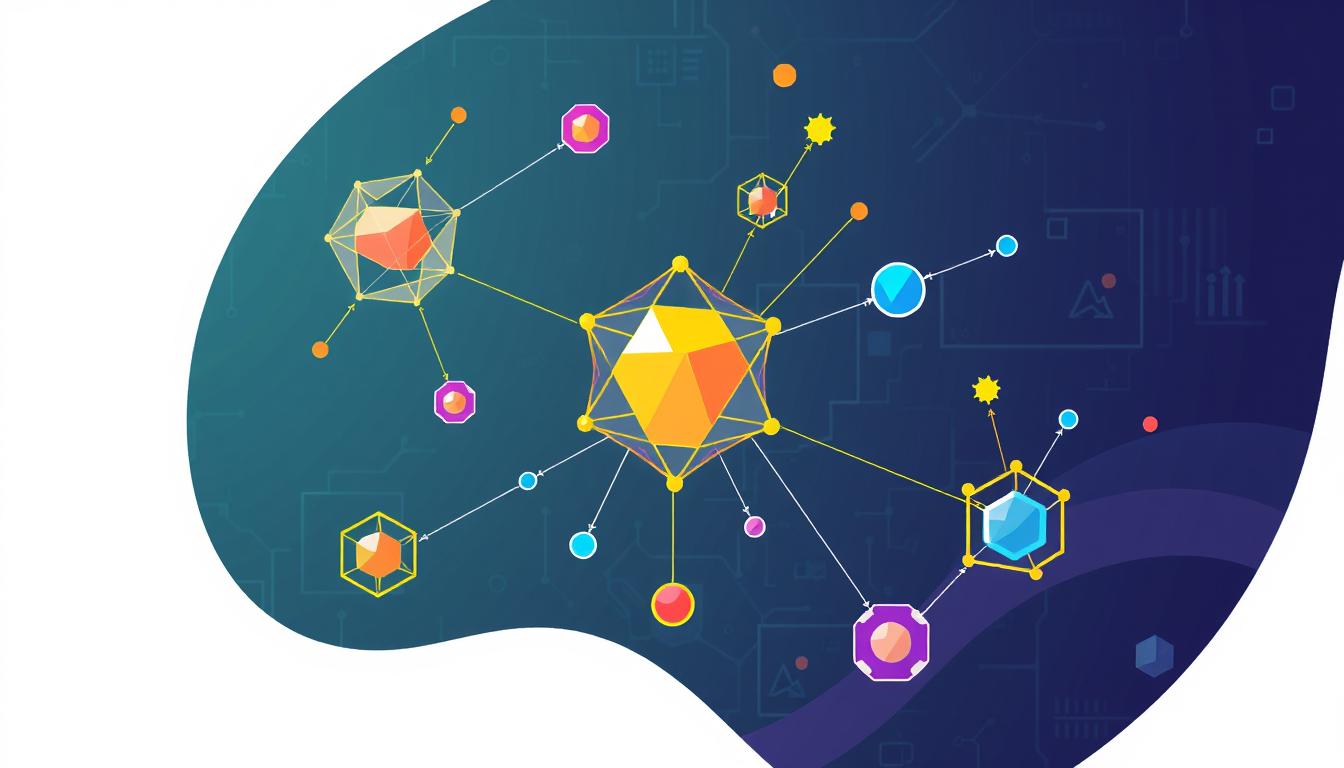Prompt Frameworks: Boost Your AI Conversations
Are you ready to unlock the full potential of AI conversations? Prompt frameworks are the key to elevating your interactions with language models like ChatGPT. These structured approaches to crafting prompts can transform the way you communicate with AI, leading to more accurate and relevant responses.
Prompt engineering is at the heart of effective AI communication. By understanding how to frame your requests, you can guide natural language processing systems to produce content that aligns perfectly with your needs. Whether you’re a marketer, researcher, or tech enthusiast, mastering prompt frameworks can significantly enhance your AI-powered tasks.
Language models are becoming increasingly sophisticated, but their output is only as good as the input they receive. That’s where prompt frameworks come in. They provide a systematic way to structure your queries, ensuring that the AI understands your intent and delivers the most valuable results.
As we dive into the world of prompt frameworks, you’ll discover how they can boost your productivity and creativity. From simple tasks to complex problem-solving, these frameworks offer a roadmap to more efficient and effective AI interactions.
Key Takeaways
- Prompt frameworks enhance AI-generated content accuracy and relevance
- Understanding prompt engineering is crucial for effective AI communication
- Structured prompts lead to more precise and useful AI responses
- Frameworks can significantly improve productivity in AI-powered tasks
- Mastering prompt techniques can unlock new possibilities in AI interactions
Understanding the Power of AI Prompts
AI prompts are key to Generative AI systems. They spark the creation of diverse content. These prompts are more than simple questions or commands. They are detailed instructions that guide AI models to produce specific outputs.
What are AI prompts?
AI prompts are special inputs that get specific responses from AI systems. They range from simple queries to complex instructions. They are the base for AI-generated content. Prompts can be made for many tasks, like writing articles or solving problems.
The role of prompts in generative AI
In Generative AI, prompts are vital. They connect human intent with machine output. By giving context and direction, prompts help AI models create relevant content. This makes AI-generated results more precise and useful.
How prompts shape AI-generated content
Prompts greatly affect the quality and nature of AI-generated content. They decide the tone, style, and depth of the output. Good prompts lead to more accurate and relevant responses. For example, a prompt for a historical event summary will differ from one for a creative story about the same event.
- Vague prompts often result in generic responses
- Specific prompts guide AI towards more focused outputs
- Context-rich prompts enhance the relevance of generated content
Knowing and using AI prompts well is crucial for Generative AI. It lets users clearly tell AI what they want. This way, users get the results they need in AI-assisted tasks.
The Impact of Prompt Frameworks on ChatGPT Interactions
Prompt frameworks are changing the game in Conversational AI. They give structure and help users clearly tell ChatGPT what they need. This leads to more precise and relevant answers, making AI talks more useful and quick.
Several frameworks have come up to make ChatGPT chats better:
- R-T-F (Role, Task, Format)
- T-A-G (Task, Action, Goal)
- B-A-B (Before, After, Bridge)
- C-A-R-E (Context, Action, Result, Example)
- R-I-S-E (Role, Input, Steps, Expectation)
Each framework has its own way to help craft prompts. This lets users get the most out of ChatGPT in different areas. For instance, R-T-F helps set up roles, tasks, and formats. T-A-G focuses on matching tasks with actions and goals.
These frameworks are super helpful in Few-Shot Learning. Here, ChatGPT learns new tasks fast with just a few examples. By using structured prompts, users can help the AI give better and more fitting answers.
Getting good at these prompt frameworks can really boost the quality of AI-made content. This includes everything from creative writing to solving problems. As Conversational AI keeps growing, knowing and using these frameworks will become even more important for better ChatGPT chats.
Exploring Popular Prompt Frameworks
Prompt frameworks are key for making Task-Specific Prompts in AI talks. They help users talk clearly with AI, getting the right answers. Let’s look at some top frameworks that make AI chats better.
R-T-F: Role, Task, Format
The R-T-F framework sets the AI’s role, task, and how to answer. It’s great for detailed talks in customer service, healthcare, and school. This method makes prompts clear, leading to better answers.
T-A-G: Task, Action, Goal
T-A-G focuses on tasks, actions, and goals. It’s best for managing projects and planning strategies. By setting these out, users help AI give more focused and useful content.
B-A-B: Before, After, Bridge
The B-A-B framework shows how to move from the start to the goal. It works well for telling stories, solving problems, and improving processes. This setup helps AI understand and find solutions.
C-A-R-E: Context, Action, Result, Example
C-A-R-E covers context, actions, expected results, and examples. This detailed method is good for training, writing guides, and analyzing scenarios. It lets AI give more detailed and useful answers.
| Framework | Key Components | Best Use Cases |
|---|---|---|
| R-T-F | Role, Task, Format | Complex interactions, Customer service |
| T-A-G | Task, Action, Goal | Project management, Strategic planning |
| B-A-B | Before, After, Bridge | Storytelling, Problem-solving |
| C-A-R-E | Context, Action, Result, Example | Training, Documentation |
Using these frameworks helps make better Task-Specific Prompts. This leads to more accurate AI conversations. Each framework has its own strengths, making it easier to meet different AI communication needs.
Prompt Frameworks: Enhancing AI Communication
Prompt frameworks are changing how AI talks to us. They make user inputs clear and structured. This helps Natural Language Processing models give better and more personal answers.
When users use prompt frameworks, AI gets better at understanding. At Boston Consulting Group, consultants got 40% better results with GPT-4. This shows how good prompts can make AI work better.
Many frameworks are out there to help AI understand what we mean:
- APE (Action, Purpose, Expectation)
- RTF (Role, Task, Format)
- TAG (Task, Action, Goal)
- ERA (Expectation, Role, Action)
- RACE (Role, Action, Context, Expectation)
New ones like COAST and GRADE are coming for specific tasks. They help us tell AI exactly what we need. This makes AI’s answers more relevant and fun.
Learning about prompt frameworks can make AI talks better. It leads to more useful and fun chats with AI.
Advanced Frameworks for Specialized AI Interactions
AI systems like ChatGPT have changed how we talk to machines. To get the best from these tools, new frameworks have come up. These frameworks help make prompts that get more precise and relevant answers.
COAST: Context, Objective, Actions, Scenario, Task
COAST is a detailed framework for complex situations. It gives context, sets goals, lists actions, describes the scenario, and outlines the task. This method is great for Few-Shot Learning, where AI must quickly grasp and act on new situations.
GRADE: Goal, Request, Action, Details, Example
GRADE is all about making clear requests with examples. It’s perfect for Controlled Generation, letting users direct AI output closely. By giving detailed examples, GRADE helps AI understand what’s wanted better.
RISE: Role, Input, Steps, Expectation
RISE focuses on interactions based on roles with clear expectations. It’s great for tasks needing a certain view or skill. It guides AI step by step, making sure the output matches what the user wants.
| Framework | Key Focus | Best For |
|---|---|---|
| COAST | Comprehensive context | Complex scenarios |
| GRADE | Goal-oriented requests | Specific outputs |
| RISE | Role-based interactions | Expertise-driven tasks |
These advanced frameworks let users make very specific and effective prompts for special AI tasks. Using them can greatly boost the quality and relevance of AI-made content.
Comparing ChatGPT-3.5 and ChatGPT-4 with Prompt Frameworks
Language Models are getting better, and we see big differences between ChatGPT-3.5 and ChatGPT-4. ChatGPT-3.5 gives clear answers and is good for short, informative texts. It’s easy to use, even for those who aren’t tech-savvy.
Pros and cons of ChatGPT-3.5
ChatGPT-3.5 is affordable, available for free in the ChatGPT Free plan. It’s perfect for quick tasks and simple AI chats. But, it might not be as creative or detailed in complex situations.
Advantages and limitations of ChatGPT-4
ChatGPT-4 brings new levels to Language Models with better understanding and depth. It can create images and handle larger contexts. It’s pricier, but offers advanced features for complex AI tasks.
Key differences in framework performance
ChatGPT-4 does better with prompt frameworks than ChatGPT-3.5. It understands subtleties and creates more personalized, creative responses. This makes it better for solving complex problems and handling multiple tasks in AI. Both use prompts, but ChatGPT-4 uses them more effectively for smart interactions.
Source Links
- 5 prompt frameworks to level up your prompts
- AI Prompt Frameworks That Will Make You Millions
- The Art of AI Prompt Crafting: A Comprehensive Guide for Enthusiasts
- ChatGPT Power Prompts Cheatsheet-C.R.E.A.T.E Framework For Prompting
- 5 ChatGPT Prompt Frameworks to Help You Unlock the Power of AI
- Mastering ChatGPT: The Top 6 Prompting Frameworks Unveiled
- Exploring Different Prompt Frameworks and Their Applications
- Guides: Artificial Intelligence (Generative) Resources: How to Craft Prompts
- AI-Powered Service Desk: We Tested Best AI Prompt Frameworks – Service Desk Institute
- AI Prompt Framework: Improve Results With This Framework And Your Expertise [Template]. – Post Control Marketing
- Effective Prompts for AI: The Essentials – MIT Sloan Teaching & Learning Technologies
- 🏆 Mastering Advanced Prompting: Integrating Nine Core Frameworks for Precision Gen AI Outputs .. Part 4
- An Example of How OpenAI’s GPT-4 and GPT-3.5 Sometimes Produce Quite Different Results
- ChatGPT-4 vs. ChatGPT-3.5: AI App Comparison
- GPT4-Turbo more "stupid/lazy" – It’s not a GPT4







